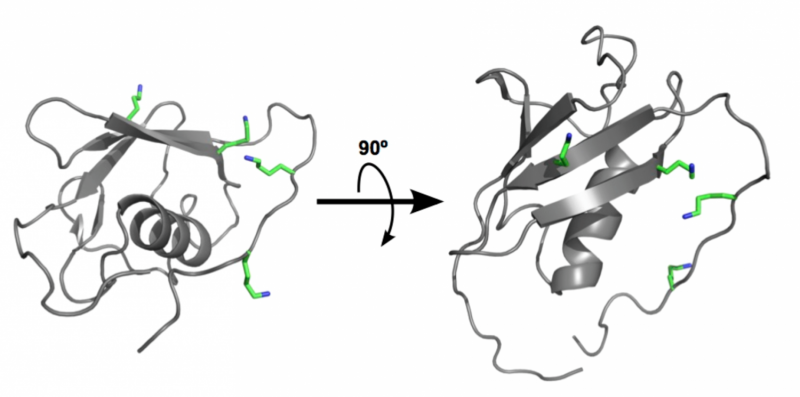Scientists have discovered a code of signals that regulates genome duplication

Three years ago, the research team directed by Óscar Fernández-Capetillo, head of the Genomic Instability Group at the Spanish National Cancer Research Centre (CNIO), obtained, for the first time, a panoramic view of the proteins that intervene in one of the most important and delicate cellular processes: the copying of genetic material during cellular division. They observed that the parts of the genome where the DNA was copied were also very rich in the modification by some very particular proteins, SUMOylations, and poor in others, ubiquitinations, but they were unable to understand why.
The continuation of the paper, published today in the Nature Structural & Molecular Biology journal, reveals how the balance between these chemical markers in these regions is, in fact, key for the division of genetic material. During this process, the USP7 protein travels with an entourage of molecules that form part of the replisome—a set of proteins involved in copying the DNA—and eliminates the ubiquitination marks of proteins in the complex, thus explaining the low concentration of ubiquitin in these areas.
"USP7 acts as an traffic officer that regulates the marks or traffic signs near the replisome. Eliminating ubiquitin prevents the proteins at the replisome from being expelled, thus favouring their concentration and the DNA copying process," explains Fernández-Capetillo.
Traffic signs in dna copy areas
As the team described in the previous paper, replisomes contain up to 50 different proteins that participate in the delicate process of copying genetic material. Some proteins open DNA's double helix, others twist it to favour copying, others stabilise it, etc. They all move together through the genome to ensure a complete copy.
In order to understand the role of USP7 and its cutting action on ubiquitin marks during the DNA copying process, the researchers used advanced protein tools.
"We knew that replisome proteins could present both modifications simultaneously [ubiquitinations and SUMOylations], but we did not know how they worked," explains Fernández-Capetillo. "We now know that USP7 eliminates the ubiquitin marks on proteins that are also SUMOylated in replication areas, which explains why there is a low concentration of ubiquitin and high levels of SUMO."
This balance between SUMO and ubiquitin establishes a code that regulates the concentration of proteins in the replisome. "If a protein is SUMOylated, it becomes enriched in the replisome, but if it is also ubiquitinated, it is expelled. This is a code of signals or flags that regulates the concentration of factors in the DNA replication area," say the researchers.
USP7 inhibitors: considerations on antitumoural activity
Apart from being of academic interest, these studies are relevant for chemotherapy. USP7 inhibitors are currently being studied as possible anti-cancer agents in pre-clinical tests.
"The model that had been proposed is that the compounds increase p53 levels, resulting in the suicide of tumour cells. Our data indicate that USP7 is essential for genome replication in cells with or without p53."
With these data, the authors of the paper warn that these molecules may not be specifically anti-tumour agents. "We believe they inhibit the cell division process regardless of whether the cells are cancerous or healthy and, therefore, their use for treating cancer in the future will have to be reconsidered."
More information: Emilio Lecona et al. USP7 is a SUMO deubiquitinase essential for DNA replication, Nature Structural & Molecular Biology (2016). DOI: 10.1038/nsmb.3185
Journal information: Nature Structural & Molecular Biology
Provided by Centro Nacional de Investigaciones Oncologicas

















